A WordPress multilingual site is great for SEO and user experience, especially when your visitors might come from every corner of the world. A multilingual website allows them to browse your site in their preferred language.
It sounds good. However, WordPress doesn’t provide any built-in functions for you to create this kind of website. To accomplish that, you might need the assistance of third-party software. Fortunately, there are many plugins out there that can help you out.
Just in case you’re struggling in finding suitable plugins for your multilingual site, we’ll review the 2 best plugins for you to choose from. To make it clear, we’ll list out their translation methods, interface, supported content, SEO friendliness, and pricing. A plugin to protect your multilingual website will wrap this article as well.
Let’s begin!
WordPress Multilingual Plugins
First and foremost, you’ll need a translation plugin, which will help you automatically translate your website to any language. There are many plugins that provide this function. In this article, we’ll pick out 2 of the most popular and highly-rated plugins: WPML and Polylang.
#1 ConveyThis
If there is one truly convenient way to translate your website, it must be
through ConveyThis!
It is the most translated language plugin in the WordPress directory (over 38 language contrubutions) and is growing fast. ConveyThis makes it very simple to integrate into WP website and activate as many as 100+ languages.
ConveyThis uses automatic machine translation to translate your entire site, and adds a language switcher button. So within the first couple of minutes, you’ll already have a working, SEO-friendly multilingual site.
It comes with both free and paid plan. Free plan that lets you translate up to 2,500 words into one language, the paid plans use SaaS-style billing, which means you’ll need to continue to pay for as long as you want to use the service.
Paid plans start at €4 a month for one language and up to 10,000 words.
#2 WPML (WordPress Multilingual Plugin)
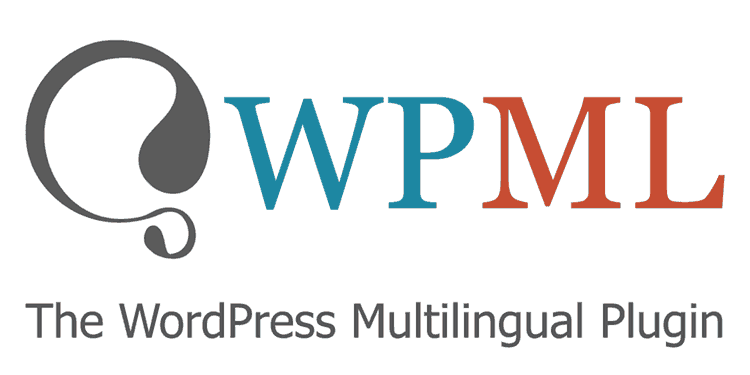
WPML comes as the oldest and most well-known multilingual plugin today. Launched in 2007, it’s still being updated and added new features regularly until now.
WPML Translation Methods
This plugin enables you to translate your content with 2 methods:
-
- Self-translate (manual translation)
- Use the Translation Management addon, which allows working with a team of translators or translation services.
WPML’s Interface
If you are going to translate the content yourself, you can do it easily via WordPress Editor.
Whenever you add a new post in the primary language, you’ll see the option in the right sidebar to create translations for your article.
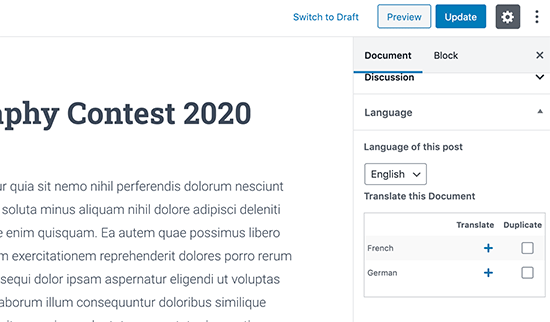
Supported Content Types
WPML gives you the ability to translate:
- All text of the themes/plugins
- Menus
- Widgets
- Taxonomies
- Custom fields
- Custom post type (including WooCommerce products)
- Content created with page builders
Is the Content Translated by WPML SEO-friendly?
WPML has everything for SEO optimization. Firstly, you can define your content’s URL structure with 3 following options:
- Subdirectory – yoursite.com/en/content
- Subdomain – vi.yoursite.com/content
- Parameter – yoursite.com/content?lang=en
That’s not all. This WPML plugin also:
- Allows you to change the URL slug for each content
- Works well with SEO plugins like Yoast SEO or All in One SEO
Pricing
WPML doesn’t offer a free version. Instead, it provides 2 paid versions as follows:
-
- WPML Blog: $29
- WPML CMS: $79 (annual subscription) or $195 (lifetime usage)
#3 Polylang Multilingual WordPress Plugin
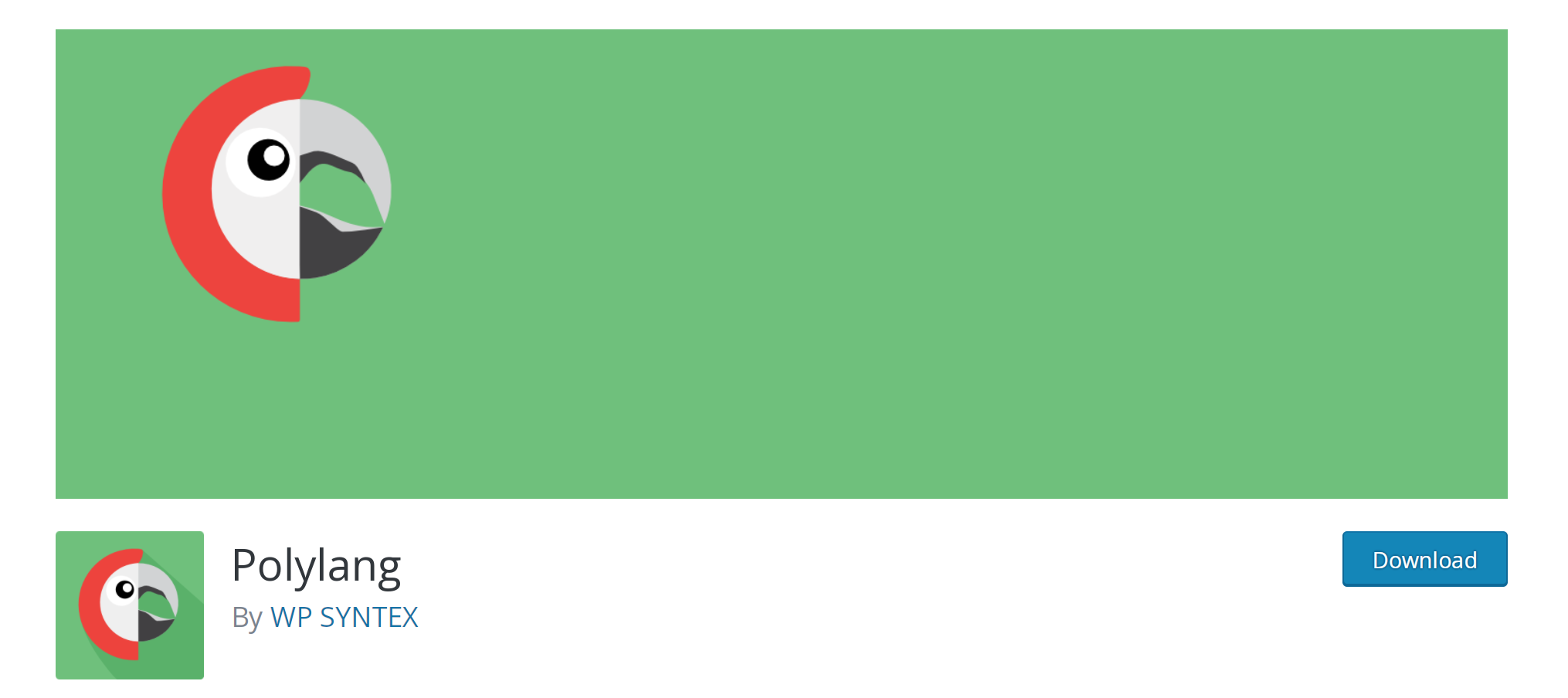
Besides WPML, Polylang is also a language switcher plugin that is widely used.
Let’s have a look at what makes it so popular right now!
Polylang Translation Methods
Basically, this plugin only gives you the ability to translate your content manually when editing pages.
That said, Polylang works nicely with the Lingotek Translation plugin to give you the ability to:
- Automatically translate websites using machine translation
- Have your bilingual employees, partners, and/or users perform translations right on your WordPress site
- Use your own translation agency or tap into Lingotek’s marketplace of more than 5,000+ in-country translators
Polylang’s Interface
Polylang’s UI is quite similar to WPML’s. You can translate your content right on the Edit page.
Once you’ve finished creating a page in the primary language, you can tap the “+” button on the right sidebar to create translated versions.
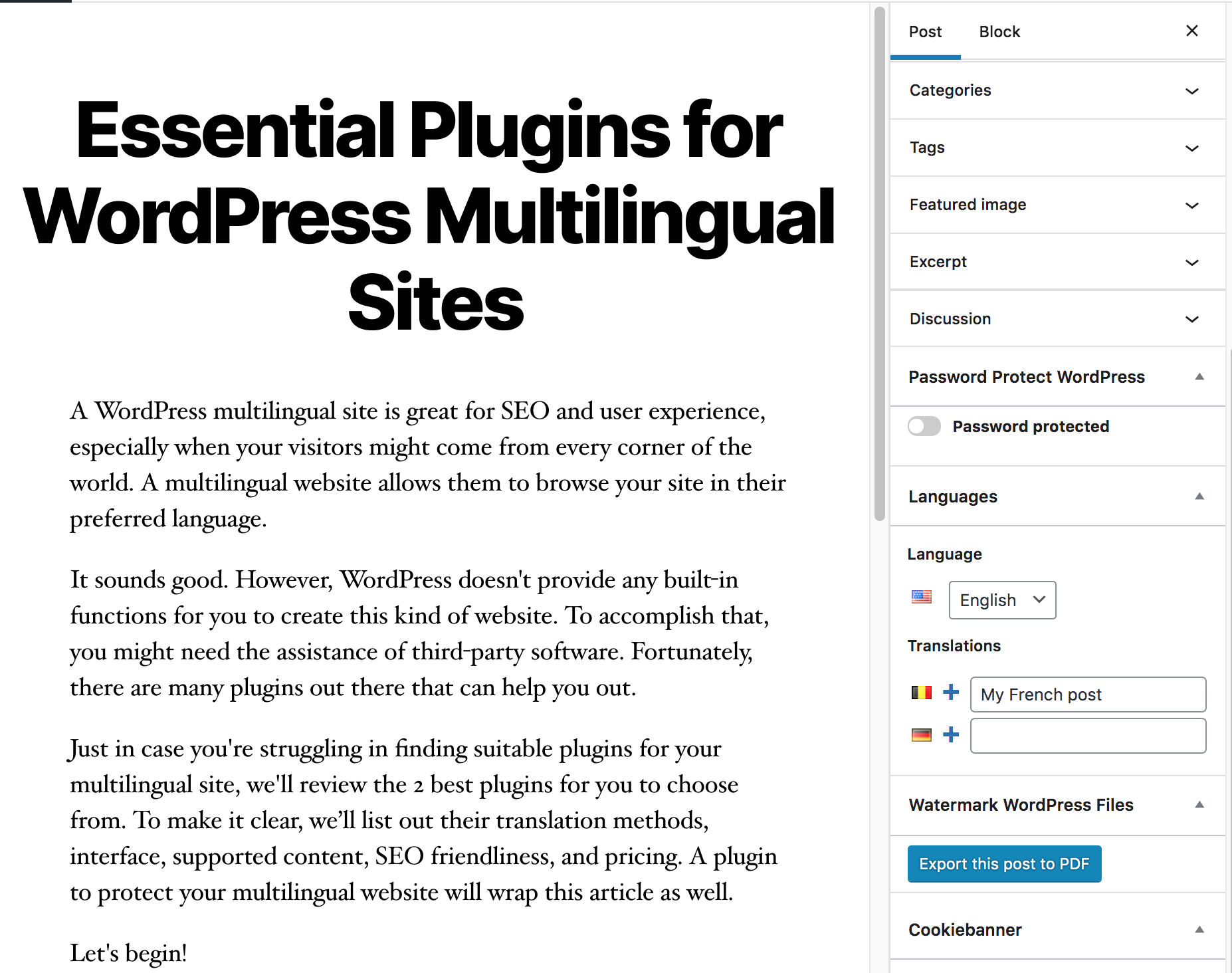
Supported Content Types
Polylang allows you to translate most of the content types on your site, even in the free version:
- All posts, pages, media, categories, tags
- Custom post types and custom taxonomies
- Menus and widgets.
Is the Content Translated by Polylang SEO-friendly?
Similar to WPML, Polylang allows you to use subdirectories, subdomains, or separate domains for your content URLs.
The plugin also permits you to use different domain names for each translation version as well.
In addition, Polylang:
- Integrates well with Yoast SEO and All In One SEO Pack.
- Automatically links to relevant URLs with menu items, categories, and more.
Pricing
This plugin has a free version available to download in the WordPress Plugin directory.
You can upgrade to the Pro version to explore other advanced features such as translating slug URLs, duplicating posts across languages.
Here are the three Pro packages for you to choose from:
- Polylang Pro – €99.00
- Polylang for WooCommerce – €99.00
- Polylang Pro for WooCommerce – €139.00
That’s it!
We’ve gone through 2 popular plugins that specialize in creating multilingual WordPress sites. Now let’s move on to the next section where we’ll introduce you to a powerful plugin for securing your multilingual content.
Protect Multilingual WordPress Site with PPWP Pro Plugin
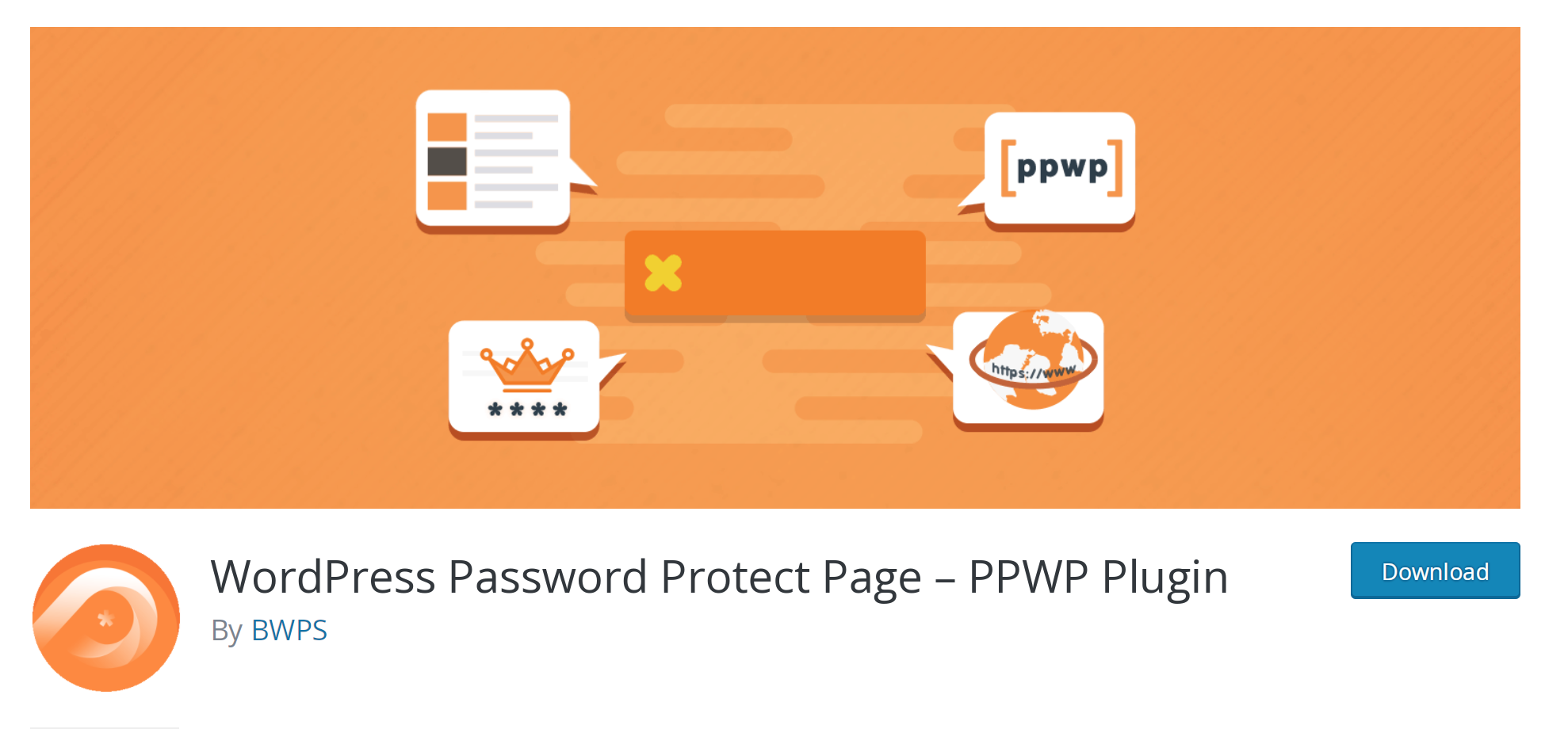
Let’s say you’ve created some premium content on your site that is accessible to some specific users. To do that, you need to hide that content from the public eye. Only those with the correct passwords can access them.
Well, you can easily secure monolingual content with any password protection plugin. How about multilingual pages and posts?
Let the PPWP Pro plugin give you a helping hand!
This password protection plugin integrates seamlessly with multilingual plugins such as WPMP and Polylang. It helps you:
-
-
- Auto-protect multilingual language content with the same passwords
- Translate password forms to any languages
-
PPWP’s Interface
Pro plugin gives you an easy-to-use and very intuitive interface.
To protect multilingual content, simply navigate to the main language content and click on the Protect button.

All sub-language content will be protected with the same generated password accordingly.
You can also easily manage passwords in the Manage Passwords popup. Here you can:
-
-
-
- Generate new passwords
- Restrict passwords by usage or time
-
-
Supported Content Types
PPWP Pro allows you to protect almost all content types, including but not limited to Pages, Posts, Custom Post Types (including WooCommerce products).
What’s more, this plugin also works seamlessly with top page builders, e.g. Divi, Elementor, so that you can protect content created with these builders without hassles. PPWP Pro also enables you to protect content created by custom fields or custom templates.
Pricing
PPWP does offer a free version that supports protecting pages and posts with passwords. To protect multilingual content, you might need to get a Pro license.
The pricing plans start at $178.80/year at the minimum for a 3-site license.
Which Are Your Prefered Plugins for Multilingual WordPress Site?
We have given a detailed review of plugins that are needed to create a multilingual WordPress site.
A translation plugin is compulsory to create multilingual content. You can consider using WPML and Polylang to accomplish that.
Just in case you want to password-protect multilingual content, let’s give PPWP a shot. This plugin won’t definitely make you.
Are there any of your favorite plugins not listed here?
Let us know in the comment section below.

